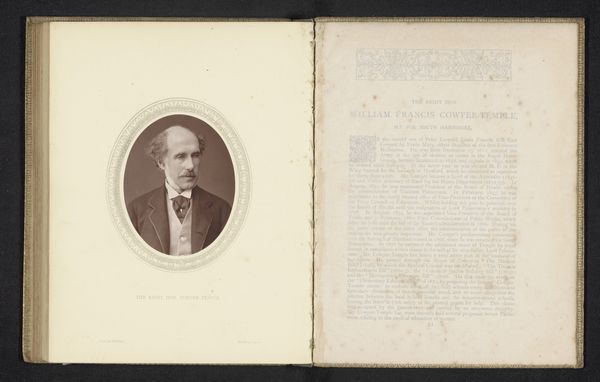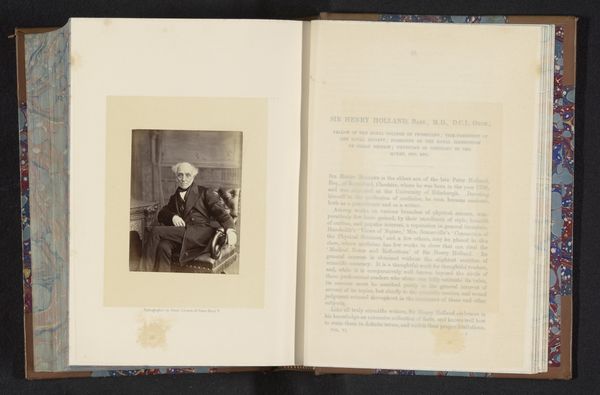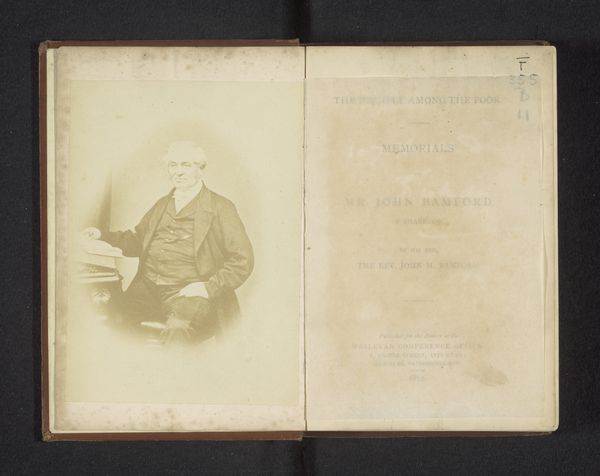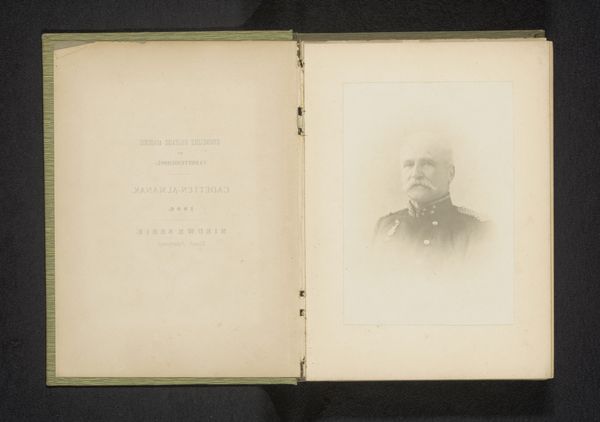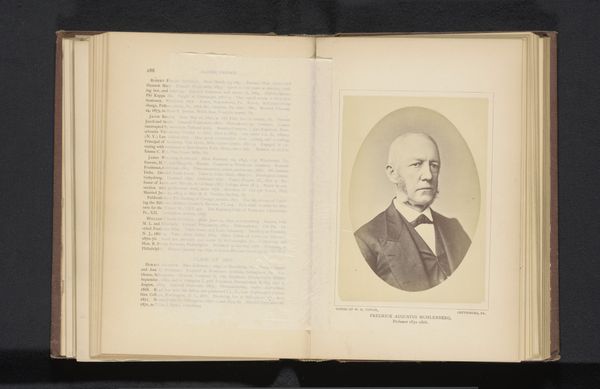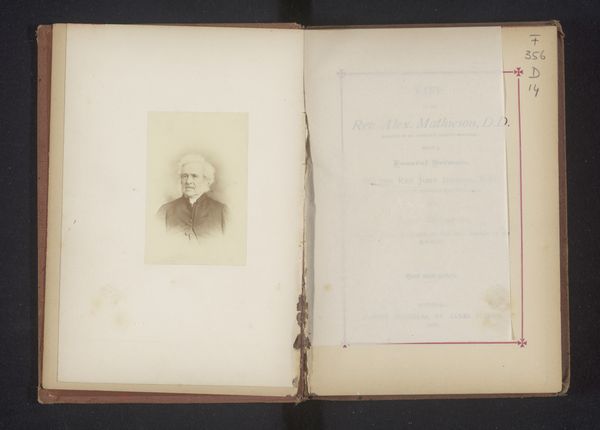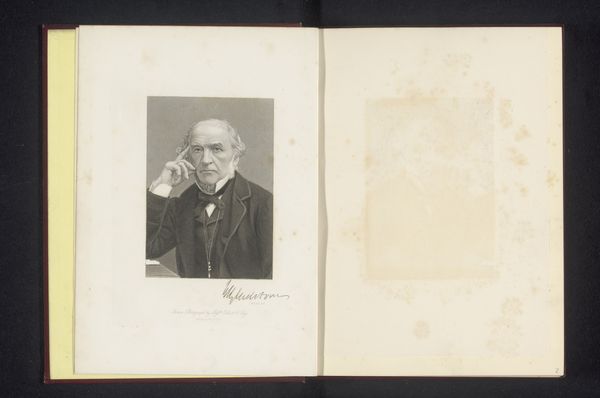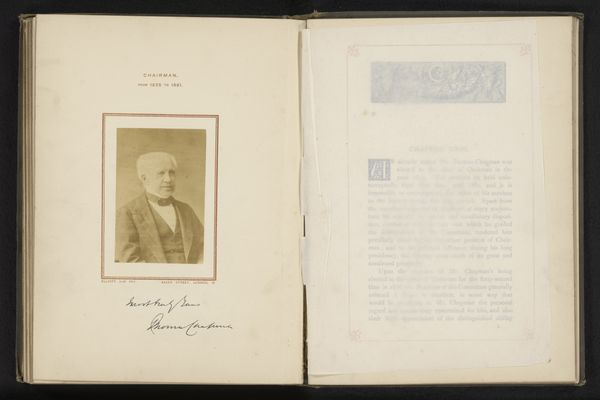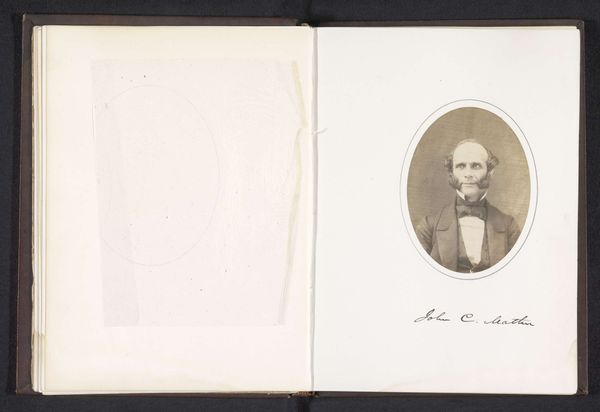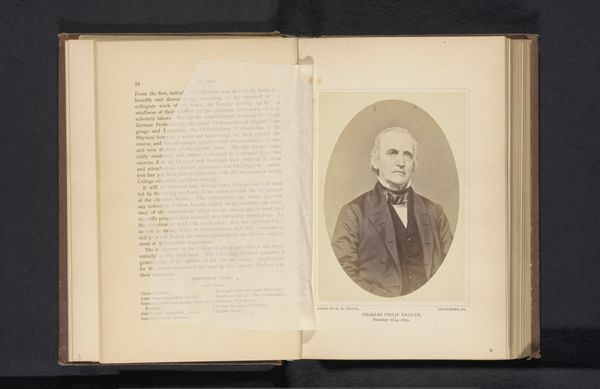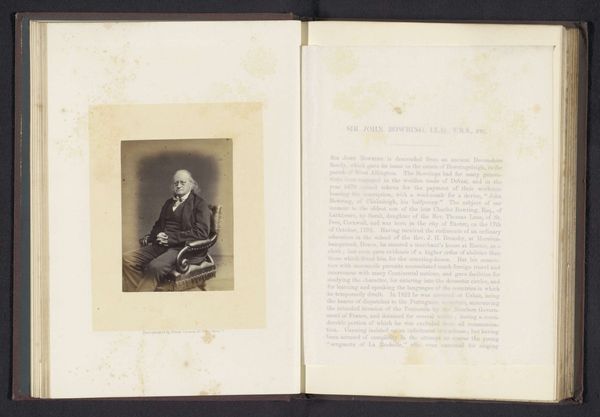
photography, albumen-print
#
portrait
#
aged paper
#
book binding
#
homemade paper
#
paper non-digital material
#
paperlike
#
personal journal design
#
paper texture
#
photography
#
personal sketchbook
#
publication mockup
#
letter paper
#
albumen-print
Dimensions: height 136 mm, width 99 mm
Copyright: Rijks Museum: Open Domain
Editor: Here we have an albumen print, "Portret van James Mason Hutchings," by Thomas Houseworth, predating 1886. It’s a portrait of a distinguished gentleman pasted into a book next to the dedication. The aging of the paper really draws me in. I’m curious about your take; what resonates with you as you look at this? Curator: The book itself functions as a reliquary here. We see Hutchings, framed both by the photographic oval and the book’s pages. Look at the facing dedication page - the words are themselves a symbol of memory, "To the many pleasant friends." It begs the question: what makes a portrait a powerful icon? Is it simply the likeness or does it represent something more, like legacy, belonging, and purpose? Editor: I guess the book suggests this is more than just a picture, right? Curator: Precisely. Consider how portraits were historically commissioned objects, declarations of status. Here, integrated into the personal volume and dedication, the image takes on the intimate power of remembrance. Even his hand-written inscription below his image becomes part of his iconographic representation. The albumen print, too, as a 19th-century photographic process, evokes the era of pioneers and early settlers of the American West. Editor: It is like an ancestor speaking. Curator: The image becomes a layered symbol of the past, of Hutchings himself, of friendship, of place – Yo Semite itself elevated to sacred geography. How does seeing it this way change your initial feeling about the work? Editor: It definitely gives it more weight. I initially saw it as just a photograph, but now I appreciate how it speaks to memory, place, and personal connections. Curator: Yes, and seeing these connections really does make this portrait sing.
Comments
No comments
Be the first to comment and join the conversation on the ultimate creative platform.
